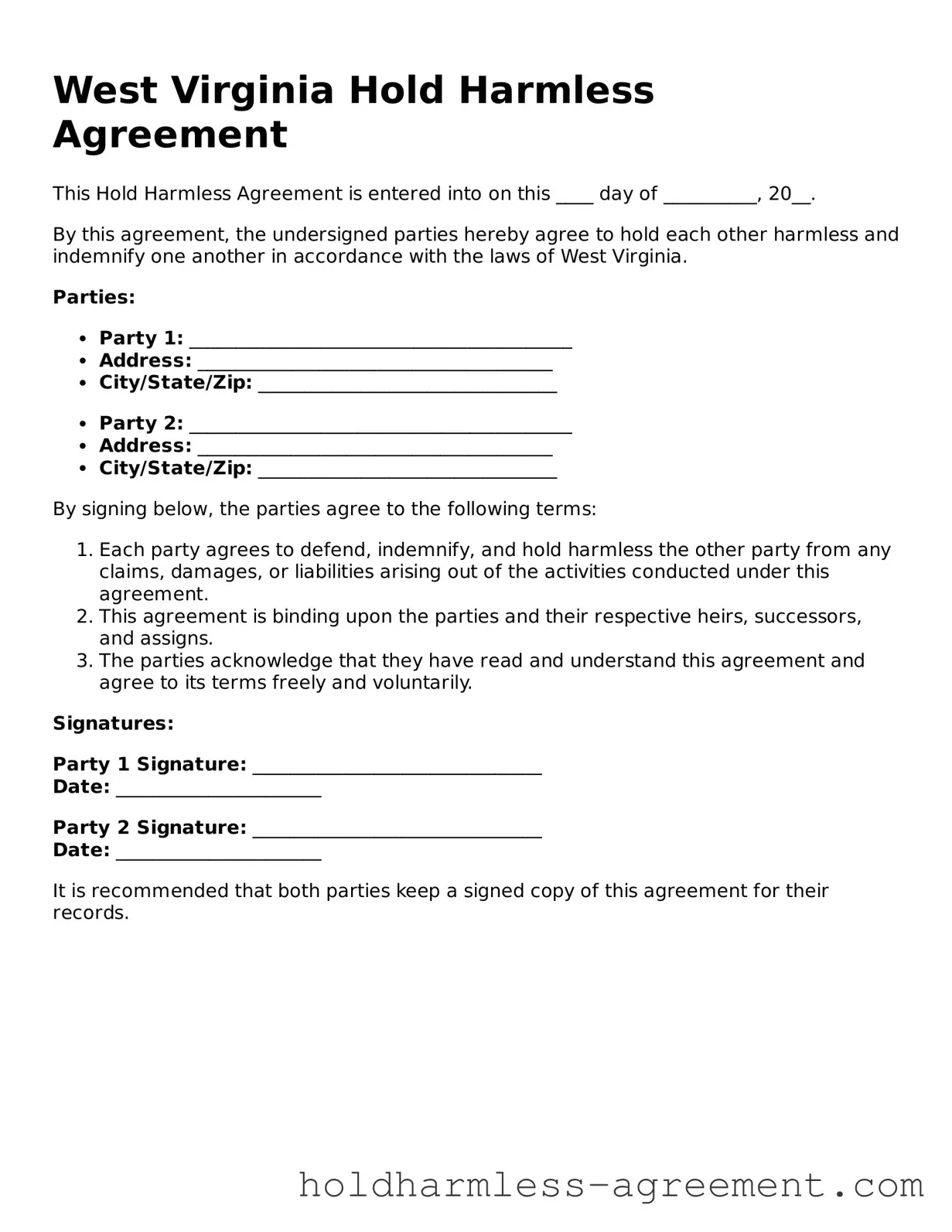What is a Hold Harmless Agreement in West Virginia?
A Hold Harmless Agreement is a legal document that protects one party from liability for certain risks or damages that may occur during a specific activity or event. In West Virginia, these agreements are often used in various situations, including property rentals, events, and construction projects. The purpose is to ensure that one party agrees not to hold the other responsible for any injuries or damages that may arise from the activity outlined in the agreement.
Who typically uses a Hold Harmless Agreement?
Hold Harmless Agreements are commonly utilized by a variety of individuals and organizations, including:
-
Property owners renting out their spaces.
-
Event organizers hosting gatherings or activities.
-
Contractors and subcontractors involved in construction or maintenance work.
-
Non-profit organizations conducting events or programs.
These agreements help protect parties from unexpected liabilities and ensure that responsibilities are clearly defined.
What should be included in a Hold Harmless Agreement?
While the specific contents may vary, a well-drafted Hold Harmless Agreement typically includes:
-
The names and contact information of the parties involved.
-
A clear description of the activity or event.
-
Specific risks or liabilities that are being waived.
-
The duration of the agreement.
-
Signatures of all parties involved, indicating their consent.
Including these elements helps ensure that the agreement is comprehensive and legally enforceable.
Is a Hold Harmless Agreement legally binding in West Virginia?
Yes, a Hold Harmless Agreement can be legally binding in West Virginia, provided it is properly drafted and executed. Courts generally uphold these agreements as long as they are clear, specific, and do not violate public policy. It is essential for all parties to fully understand the terms before signing, as this ensures that everyone is aware of their rights and obligations.
Can a Hold Harmless Agreement be challenged in court?
Yes, there are circumstances under which a Hold Harmless Agreement can be challenged in court. For instance, if the agreement is found to be ambiguous, if one party did not fully understand the terms, or if it attempts to waive liability for gross negligence or willful misconduct, a court may deem it unenforceable. It is important for individuals to seek legal advice when drafting or signing these agreements to avoid potential disputes.
How can I create a Hold Harmless Agreement?
Creating a Hold Harmless Agreement involves several steps:
-
Identify the parties involved and their roles.
-
Clearly outline the activity or event and associated risks.
-
Draft the agreement, ensuring all necessary components are included.
-
Review the document with all parties to ensure understanding.
-
Obtain signatures from all parties to finalize the agreement.
For added assurance, consulting with a legal professional can help ensure that the agreement meets all legal requirements and adequately protects all parties involved.
